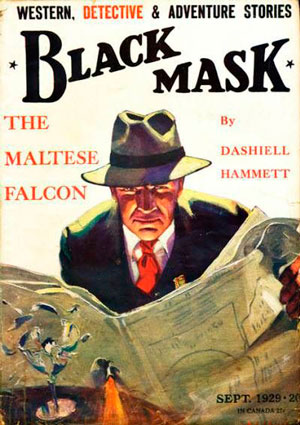 Jamal al-Din ʿAbd al-Raḥim al-Jawbari’s thirteenth-century Book of Charlatans is not only a comprehensive guide to trickery and scams as practiced in that period in Syria and Egypt—with tricks all the way from India and Morocco—but also a delight to read. It’s full of the wiles of false prophets, quacks, prestidigitators, cat burglars, money changers, pedophiles, horse copers, false alchemists, and—worst of all—women:
Jamal al-Din ʿAbd al-Raḥim al-Jawbari’s thirteenth-century Book of Charlatans is not only a comprehensive guide to trickery and scams as practiced in that period in Syria and Egypt—with tricks all the way from India and Morocco—but also a delight to read. It’s full of the wiles of false prophets, quacks, prestidigitators, cat burglars, money changers, pedophiles, horse copers, false alchemists, and—worst of all—women:
The author, al-Jawbarī, was well versed in the practices he describes and may well have been a reformed (or unreformed) charlatan himself. Divided into thirty chapters, his book reveals the secrets of everyone from “Those Who Claim to be Prophets” to “Those Who Claim to Have Leprosy” and “Those Who Dye Horses.” Some read like elaborate short stories, raunchier and more sexually daring versions of Arsene Lupin or Sherlock Holmes. Others read like short puzzle mysteries, of the sort that might have appeared in the detective magazines popular in 1940s Cairo.
Translator Humphrey Davies talked with ArabLit editor M Lynx Qualey about trickery and translation.
You really get some of the best projects. How did this one come to you, or how did you come to it? Was there—I hope—trickery involved?
Humphrey Davies: No trickery: a translator must be like a valet to his authors, always supportive but never taking the liberty of aping them. I read about the book somewhere, a long time ago, and knew it was for me. Note that I didn’t actually read a word of it until I came to make the proposal. These things are in the cosmos.
I’m curious about the construction of the “I” in this book, as well as in the other books al-Jawbari might have modeled it after. If I were to write a book detailing “Ways in Which Publications Cheat Freelancers,” for instance, naturally when I used the “I” we could feel relatively certain I was referring to the Marcia who was born in St. Paul, Minnesota. But the “I” in this book sometimes seems to be a very pious man who doesn’t approve of music and urges us to say no to weed, while at other times he portrays himself as a good-time guy and drinking buddy of a trickster.
HD: I don’t see these as inconsistencies so much as rhetorical ploys. To give credibility to his accounts of chicanery, he must have a whiff of that world about him. At the same time, to have credibility as a warner against chicanery, he must wear at least a fig leaf of respectability. The real source al-Jawbari’s credibility lies not, however, in the detail (Was he a bit of a chancer himself? Did he mix in a few tall stories?) but in his skeptical attitude to all of it. For him, everything is a swindle and everything can be explained (there are a few exceptions but these are offered in a spirit of “I don’t know how they do this, but I’m working on it”). In a world of where everyone from gormless mark to greedy king is ready to believe his dreams long before he believes his eyes, al-Jawbari keeps his beady gaze trained on the trickster’s hand, not his mouth. This was unusual, perhaps unique, in his day.
To what extent does the “I” refer to the author and things that “really happened” (books he really read, events he really witnessed, methods he really mastered) and to what extent a rhetorical flourish? I suppose he wouldn’t have had a fact-checker or worried much about being found out as an impostor.
HD: I think it’s a mixture. Much of the material has the ring of truth, and why not? Some of these tricks, such as producing ersatz versions of expensive condiments, could be reproduced in one’s own kitchen, while others, such as “find-the-pea” or the weeping child who pretends she’s broken her mother’s pot and can’t go home without money for another one are practiced to this day. At the same time, when it comes, for example, to the sheikh who lights his followers’ way on a dark night by putting forty glow worms in a hairnet tucked into his turban, one can only say that things are often more entertaining if one exaggerates a bit. One of the main points to emerge, and this seems entirely realistic, is how much the charlatans’ success, especially in the more elaborate hoaxes such as those of the fake alchemists, is driven as much by people’s desire to believe as the demonstration of any extraordinary powers.
You say that René Khawam describes al-Jawbari as mingling the sociological eye of Ibn Khaldun with a Sherlock Holmesian approach to his subject matter. Indeed, many of these read like short puzzle mysteries of the kind one might expect to find in a 1940s detective magazine, while others are more like a short story that might have been found in the same magazines—not a lot of character development, but fast-moving plots with interesting twists. “Those Who Work Solomon’s Ant” is a particularly sophisticated work of “based on a true story” fiction. Were other versions of this floating around, as with the story of the enchanted ape (monkey), or might “Those Who Work Solomon’s Ant” have been his own creation? Do you know if anyone’s tried to trace ancestries to any of the anecdotes in the book? Or to follow where the stories went afterwards?
 HD: The material is very varied. It goes from the humdrum recipe (“take loose talc . . . and grind, very well, with frog fat”) to complex narratives, not unlike bleakly Bowlesian short stories, such as “Those Who Work Solomon’s Ant,” which involves a boy-stalking sheikh, accomplices, a (very) gullible youth, complex sexual choreography, and an account of the unexpected uses to which angels can put their burning spears and all to an end that hardly seems to justify the means (I mean they could have just . . .). This really is storytelling for the fun of it. I think such pieces belong (like that of the supposedly enchanted ape, of which I discovered another version) to a vast and largely lost treasury of oral narrative.
HD: The material is very varied. It goes from the humdrum recipe (“take loose talc . . . and grind, very well, with frog fat”) to complex narratives, not unlike bleakly Bowlesian short stories, such as “Those Who Work Solomon’s Ant,” which involves a boy-stalking sheikh, accomplices, a (very) gullible youth, complex sexual choreography, and an account of the unexpected uses to which angels can put their burning spears and all to an end that hardly seems to justify the means (I mean they could have just . . .). This really is storytelling for the fun of it. I think such pieces belong (like that of the supposedly enchanted ape, of which I discovered another version) to a vast and largely lost treasury of oral narrative.
Reading other pre-modern “low adab” works, such as al-Shirbini’s Brains Confounded, one comes across similar stories. There’s a PhD dissertation or three in there (if they haven’t already been done).
Might his frequent and unexplained use of vernacular thieves’ argot suggest that he used these terms in his own life? We know he wasn’t born “enveloped in a caul of good fortune,” or at least that’s what he tells us. After having spent a great deal of time with him, how would you describe al-Jawbari?
HD: He seems to me a truly in-between character – in between autodidact and man of letters, in between conman and upstanding citizen, in between chancer on the streets of Damascus and provincial court hanger-on in the provinces. His language says it all: he can pull off a bit of verse or a rhetorical flourish if he needs to but his natural style is that “careless Middle Arabic” that Stephan Wild speaks of – an easy conversational tone, shot through with jargon and slang. Also a traveler, a man who didn’t like to be pinned down: if we take him at his word, he had been to Morocco on the one side and to India on the other. Certainly, everywhere from Cairo through Syria and on up into Anatolia was his stomping ground; his world fills our imagination with a sense of freedom and vistas now foreshortened (“He asked me to go with him but I refused, and left town, making for Sivas”). As to hanging out with him, I’m sure it would have been very entertaining but I know who would have ended up paying the bill.
I love the modest but important intervention of the exclamation mark! It makes your translation feel much more oral and showmanlike. How did you decide on punctuation? From reading aloud to yourself? And how did you decide when to insert an anachronism, as ukulele for tarabrub? How did you work to (discover? re-create? invent?) al-Jawbari’s voice in English?
HD: I don’t think deciding on punctuation is different from deciding on a word: the tone of the passage, the voice in your head (which I don’t need to exteriorize), demands that tabloid touch. Anachronisms work when some kind of a comic shock is needed, as in the “tarabrub” passage, where a dodgy preacher does all sorts of hilariously inappropriate things while in the pulpit (and for a bet, no less!); they nail in the joke that much faster. Discovering and recreating (but not inventing) authors’ voices are the essence of translation, the heart of the mystery, the moment when the eyeballs roll back, the peyote kicks in, the . . .. No, I mean, like seriously!
Did you try any of the methods or recipes (not taking a tapeworm out of someone’s eye, I hope)? For myself, I attempted the onion-juice invisible ink. Many of them seem ridiculously elaborate, at least by today’s standards. It might make a very entertaining (expensive, and dangerous) TikTok, to go through and try them. Although the flying paper doesn’t sound easy, al-Jawbari says, “It’s the most extraordinary thing.”
HD: I begged the publisher to put the book out with a paper band round it saying: “Keep Out of Reach of Children! Do Not Try These Tricks At Home!” but apparently it would have cost too much. My own attempts have been foiled by the difficulty of obtaining the correct ingredients (who stocks frog fat these days?).
You (or Manuela Dengler?) note that the text had a “great and continuing popularity” up to the early twentieth century. Was it during the nahda period, when Arsene Lupin and Sherlock Holmes came into vogue, that its popularity subsided? Does it reappear in popular culture now? Or why not? It still seems just as fun as it would’ve been 200 or 300 or 500 years ago.
 HD: I believe Manuela Dengler, the editor of the text, found cheap, “yellow-paper” editions from as late as the 1930s, but by then everything had changed. It wasn’t just that Sherlock Holmes and Lupin had been translated, but that almost everything about a text had changed – conventions such as the opening in praise of the Prophet followed by a passage in rhyming prose laying out the territory to be covered were gone. Even the layout, the look of the text on the page, was different. People like stuff that’s wrapped according to their expectations; can you get a kid to read a printed book when they’ve grown used to a tablet? The true successor to al-Jawbari’s book are the sensationalist press and its book-length spin-offs. Come to think of it, and harking back to your earlier question of how I would describe al-Jawbari, one of the images of him that appears to my mind’s eye is that of the investigative journalist, the sort of newshound who appears in American movies and cartoons from the thirties with a ticket (for what? morgue compartments?) stuck in the band of his trilby (though in al-Jawbari’s case I see it stuck in his turban).
HD: I believe Manuela Dengler, the editor of the text, found cheap, “yellow-paper” editions from as late as the 1930s, but by then everything had changed. It wasn’t just that Sherlock Holmes and Lupin had been translated, but that almost everything about a text had changed – conventions such as the opening in praise of the Prophet followed by a passage in rhyming prose laying out the territory to be covered were gone. Even the layout, the look of the text on the page, was different. People like stuff that’s wrapped according to their expectations; can you get a kid to read a printed book when they’ve grown used to a tablet? The true successor to al-Jawbari’s book are the sensationalist press and its book-length spin-offs. Come to think of it, and harking back to your earlier question of how I would describe al-Jawbari, one of the images of him that appears to my mind’s eye is that of the investigative journalist, the sort of newshound who appears in American movies and cartoons from the thirties with a ticket (for what? morgue compartments?) stuck in the band of his trilby (though in al-Jawbari’s case I see it stuck in his turban).
Who is the “you” or audience who he occasionally calls “ya akhi” and often is abjuring to wise up, promising not to bore, and patiently explaining that he doesn’t want any of these scams to remain a mystery to us? Would the “you” have been to some extent his patron, Rukn al-Din? Occasionally I felt that this could be used as an excellent self-help book on becoming a charlatan and gulling others.
HD: Yes, proximately Rukn el-Din, but more widely, since the search for useful knowledge is the duty of all good men, everyone else.
It’s sad that, even though women are clearly more “cunning, devious, treacherous, audacious and immodest than men,” we get only a very small portion of the book. And unfortunately, the ones he records—of course he knows many more!—seem fairly unambitious if not pathetic. I can believe al-Jawbari saw a woman get 10 silver pieces out of her husband, scold him back home, and then stay out drinking herself. But it doesn’t seem like a very big feat of trickery, nor do the 15-year-old girls cheating on their older husbands. Women do appear elsewhere (as the women who want their husbands dead) but they never seem to really cheat anyone. Also, taking sexual advantage of a boy is described in blow-by-blow punning and detail, while we seem to avert our gaze when it comes to women. Yet there must have been women among the bands of tricksters, as for instance he describes bringing out women to pretend they are noblewomen fallen on hard times.
HD: You are likely right: women surely must have played some role in the escapades of the Banu Sasan and others but they get little attention. But what is going on when al-Jawabari ends his book with a chapter on the wiles of women is different. He is ending as he began: his first chapters are devoted to the tricks of fake prophets, i.e., directing our attention to eternal truth, albeit inverted; the last chapter brings us back to another eternal truth, the destructive cunning of women and their infinite capacity for deceit. I am just the translator.
What draws you to the translation of medieval works? Or rather — what makes you want to straddle both worlds, the medieval and the very contemporary? Do these practices inform each other? Does your translation of al-Jawbari improve your translation of Aziz Mohammed? What do you discover in the process?
HD: I like to do both because (a) the older material includes gems priceless as myrrh and (b) the continuities between older and newer Arabic literature are greater than the disjunctions, despite the changes in the language itself and despite the abandonment of certain genres and the adoption of others. Thus al-Jawbari will, yes, help my translation of Aziz Mohammed, though I’d be hard put to say exactly why. I can say that frequently when I translate something new, I come upon phrases, tropes, even diaphanous sentiments that make me halt and think, “I remember this from . . . .”
What elements do you think hold together your translation oeuvre? What will we find reappearing, again and again? (I would say it’s a strong authorly voice, but perhaps you’d see it differently.)
HD: I hope what you say about individual authors’ voices coming over distinctly is true but I find it hard to analyze my own work (beyond exclaiming “OMG, how could I have written that!” every time I see it for the first time in print). I do know what kind of writer I like – the marginal and contrarian, and those who deal with real life.
Find out more about The Book of Charlatans and order a copy here.


